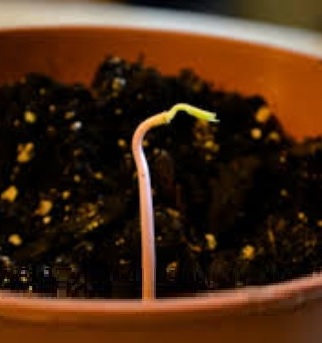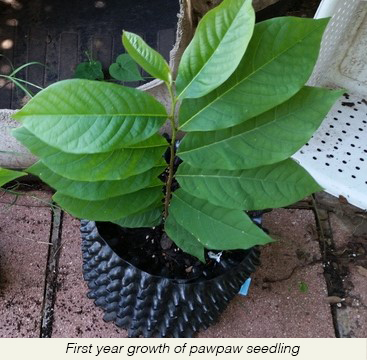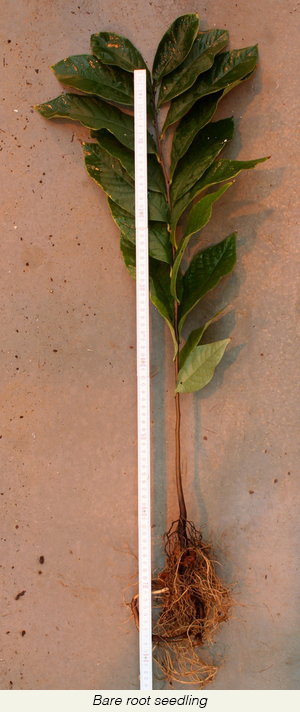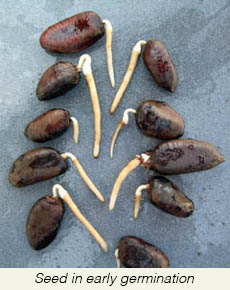Germinating Seeds
Seed Germination
Seeds are slow to germinate, but easy to grow seedlings provided certain procedures are followed.
Seed Care
Do not allow the seed to freeze or dry out, because this can destroy the immature, dormant embryo. If seeds are dried for 3 days at room temperature, the germination percentage can drop to less than 20%.
Beginning the Growth Cycle
To break dormancy, the seed must receive a period of cold, moist stratification for 70-100 days. This may be accomplished by directly sowing the seed late in the fall and letting it overwinter; the seed will germinate the following year in late July to late August.
Another way is to stratify the seed in the refrigerator (32°- 40° F/0° – 4° C). In this case the cleaned seed should be stored in a plastic ziplock bag with a little moist sphagnum moss to keep the seed moist and suppress fungal and bacterial growth. After stratification the seed should be sown 1 inch (2.5 cm) deep in a well-aerated soil mix, pH 5.5-7, with an optimum temperature of 75° – 85° F (24° – 29° C).
Planting
Use tall containers, such as tree pots (ht. 14 in – 18 in / 35 – 45 cm) or root trainers (ht. 10 in / 25 cm), to accommodate the long taproot. The seed will normally germinate in 2-3 weeks, and the shoot will emerge in about 2 months. During this time we have found it useful to apply a half-inch (1.25 cm) layer of sand. It prevents the seed coat from being pulled from the soil as well as keeping the weeds down. Germination is hypogeal: the shoot emerges without any cotyledons.
For the first two years, growth is slow as the root system establishes itself, but thereafter it accelerates. Trees normally begin to bear fruit when the saplings reach 6 feet (2 meters), which usually requires five to eight years.
Oikos Tree Crops offers a great video on pawpaw seed germination on their Youtube channel.
Germination Gallery





